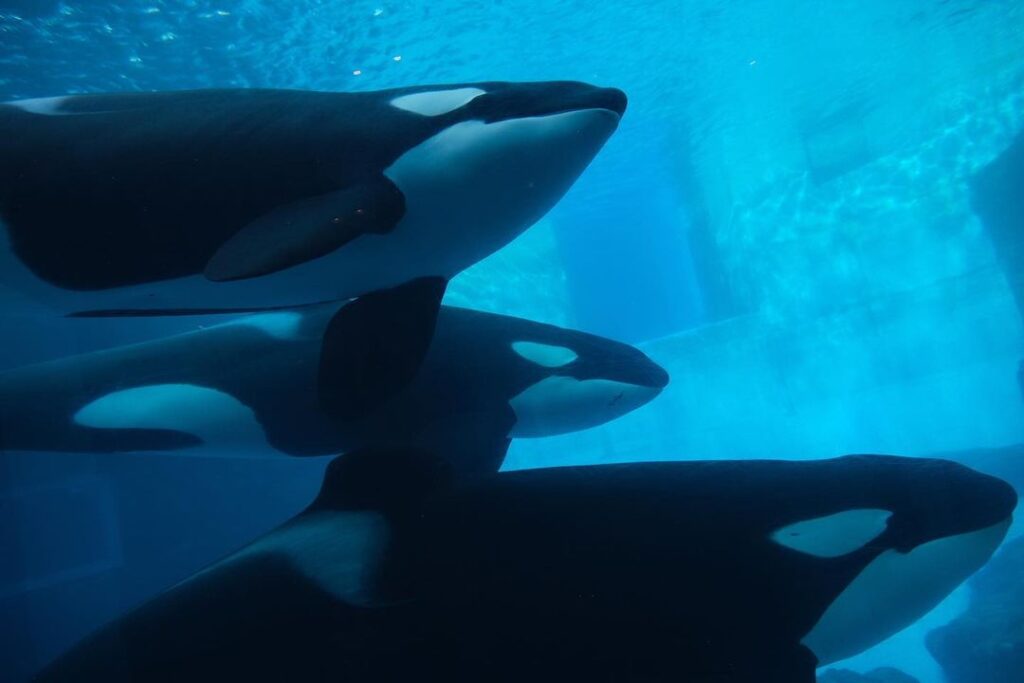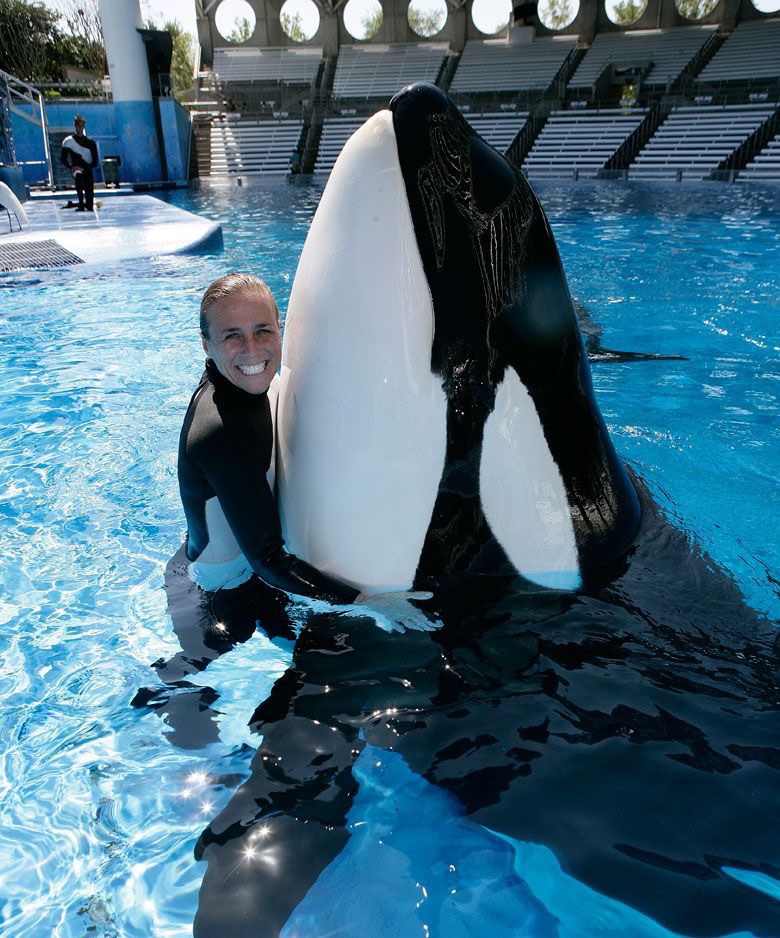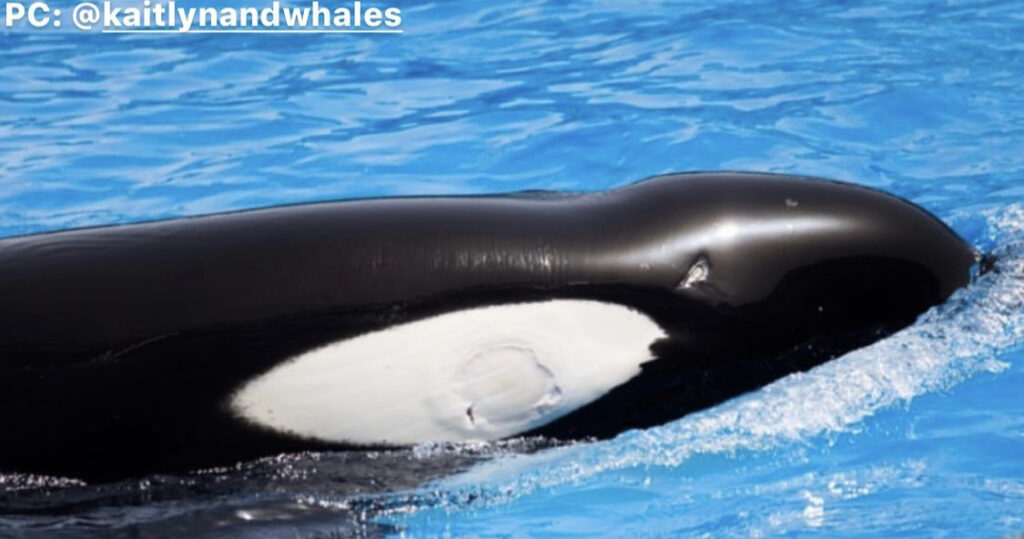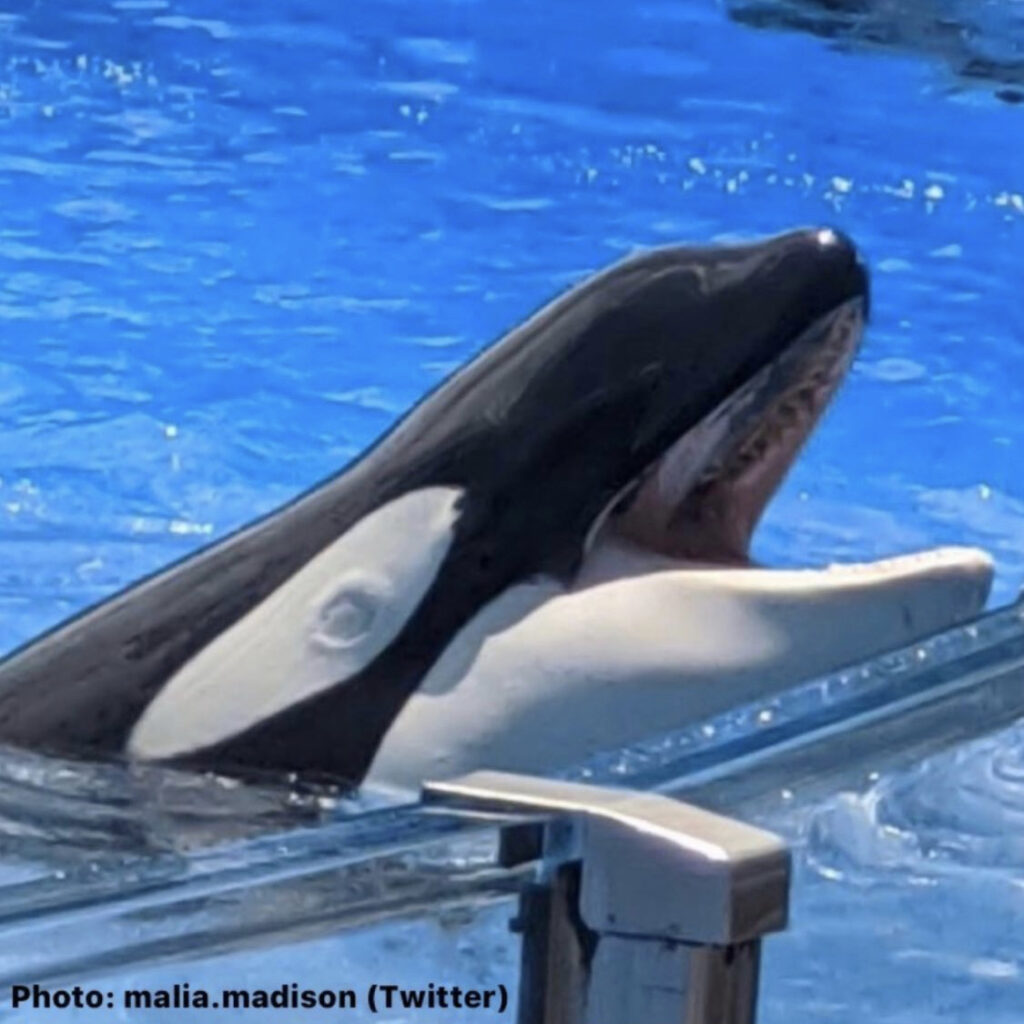November 4, 2020:
Earth, Port of Nagoya Aquarium’s lone male orca, has finally been reunited with his grandmother, Stella, and aunt, Lynn, almost a year after they were first separated! Is this just temporary? Will he be separated from them again at a later date? We’ll have to wait and see, but for Earth’s sake I hope not!

October 19, 2020:
David Kirby’s critically acclaimed book “Death at SeaWorld: Shamu and the Dark Side of Killer Whales in Captivity” has been optioned by two Fremantle firms (The Apartment and Castlefield) to be made into a 10-part drama series!
Here’s what Fremantle has to say about it: “Death at SeaWorld draws on the acclaimed investigative thriller that preceded the award-winning documentary Blackfish to dive deeper on an epic true story of humanity versus nature, big business and primal horror. Set against 40 tumultuous years of history, heroic activism and mind-blowing scandals, Death at SeaWorld follows five compelling characters whose lives intertwine then collide with the 2010 slaughter of all-American SeaWorld poster girl by the captive killer whale Tilikum. The fallout of this disaster fired shockwaves around the globe which endure to this day as we repeatedly fail to heed the lesson that nature is not ours to control or commodify. It also triggered an exhilarating high stakes investigation and trial that went straight into the dark heart of our relationship with the natural world.”
David Kirby is working as the Consulting Producer for the series, with Dr Naomi Rose ensuring all the scientific information presented is completely accurate. If all goes well production will start in late 2021!
September 29, 2020:
Cetacean captivity is coming to an end in France!
Environment minister Barbara Pompili announced new measures today that would ban the breeding and importation of captive dolphins and killer whales, with the goal to phase out dolphinariums all together. France will not allow any new dolphinariums to open and is pushing for the closure of existing ones within seven to 10 years. France currently has three dolphinariums with around 28 bottlenose dolphins and a family of four killer whales. These new measures will mean these individuals will be the last generation of captive cetaceans in France.
The new measures also include outright banning mink fur-farms and the use of wild animals in circuses, affecting four fur farms and around 80 circuses, which have some 230 animals, including big cats, elephants, hippos, wolves and others.
This is BIG news and a massive step in the right direction. Thank you to France for taking a stand against the exploitation of wild animals! 💙
August 8, 2020:
Today marks 50 years since the most brutal capture event in Washington State waters to date, an event that secured Miami Seaquarium with their most prized resident – 54-year-old killer whale Lolita.
In what infamously became known as the Penn Cove captures, over 80 Southern Resident killer whales were chased with boats, planes and explosives in Puget Sound, and rounded up into Whidbey Island’s Penn Cove. Seven youngsters, ranging between two and five years old, were selected for sale and shipped to aquariums across the world. Five whales, including four calves, drowned after becoming entangled in the nets. Their bodies were slit open and filled with rocks, and anchors were tied to their tails in an attempt to hide their deaths.
Lolita was one of the unfortunate calves selected for captivity that day, and was soon sold to Miami Seaquarium where she has resided ever since. Those captured with her have all since passed, as well as every member of her extended family that was captured and sold prior to her capture, making her the last-surviving Southern Resident in captivity. Among the dead includes Lolita’s own tankmate, a male named Hugo.
Captured two years before Lolita, Hugo spent 12 years at Miami Seaquarium and developed a history of self-harming behaviour that consisted of him slamming his head into the windows and walls of his tank. On one notable occasion he managed to break a window and slice off five-inches of his rostrum. While this eventually healed, his disturbing behaviour continued until he suffered a brain aneurysm on March 4, 1980, and tragically passed away. Lolita hasn’t seen another orca since, spending the past 40 years in complete isolation from her own species.
For 50 years Lolita has lived a miserable life at the hands of Miami Seaquarium. She’s been cruelly confined in the world’s smallest orca tank, one she’s forced to share with smaller dolphins who attack her, and left to languish in the sweltering Miami heat without any shade, leaving her with painful sunburns and permanent damage to her eyesight. Please urge Miami Seaquarium to retire Lolita. We cannot let her suffer in silence for any longer.
June 17, 2020:
SeaWorld Orlando has officially re-opened following a mid-March closure due to COVID-19. Taken earlier today, these photos reveal some sort of injury or lesion on matriarch Katina’s right eyepatch and jaw. Hopefully whatever it is is nothing to worry about and heals up soon.
April 7, 2020:
Four killer whales and 10 belugas may be the next victims of Russia’s wildlife trade. The Pacific branch of VNIRO (Russian Scientific Research Institute of Fisheries and Oceanography) hopes to capture 14 whales for “scientific research” in 2021. Unfortunately, it’s very unlikely these whales will serve any benefit to science but instead live and die as prisoners of human exploitation. We can’t let this happen. We can’t let the horrors of the Whale Prison be repeated. Fortunately, Russian authorities are holding a public hearing on April 17, 2020, giving animal advocates the opportunity to prevent this blatant cruelty.
Please email VNIRO (vniro@vniro.ru) and the Pacific branch holding the hearing (tinro@tinro-center.ru) and urge them not to capture four killer whales and 10 belugas in 2021. If you’re unsure what to say, DM me your email address and I’ll send you a pre-written appeal you can forward on. Please act for these whales! We only have one chance.
March 26, 2020:
Fantastic News! Russia’s Ministry of Natural Resources will finally add Bigg’s killer whales to its list of endangered species, four years after the draft order was first proposed. The listing of Bigg’s killer whales in the Russian Red Book – a state document established for documenting rare and endangered species of animals, plants and fungi, as well as some local subspecies that exist within the territory of the Russian Federation and its continental shelf and marine economic zone – will give the whales greater state protections and make it illegal to capture this ecotype for commercial purposes.
Between 2012 and 2017 around 20 Bigg’s transient orca calves were captured from Russia’s Sea of Okhotsk in the Kamchatka region. A further 12 were captured in early 2018 and housed at a facility that became known as the Whale Prison. Public outcry ensued and 10 individuals were eventually released back into the wild. It’s thought the cruelty exposed at the Whale Prison acted as the final push to urge authorities to add Bigg’s transients to the Red Book. While it’s great something so positive has come from the hell that was the Whale Prison, it does leave Russia’s resident population of whales vulnerable to becoming the next target of capture operations. Help ensure wild whales stay wild. Do not support captivity. Do not buy a ticket.
March 5, 2020:
The Whale Sanctuary Project has chosen Port Hilford, Nova Scotia, as its desired location to build a seaside sanctuary for retired captive whales.
The project officially launched back in May 2016 and sought to combine the collaborative efforts of experts in marine biology, engineering/construction, geography, veterinary medicine, zoology and other fields to create the world’s first ocean sanctuary designed specifically for orcas and belugas.
Hundreds of locations across North America were thoroughly researched, ranging all the way from Washington State, USA, to British Columbia and then finally Nova Scotia, Canada. Sea-floor conditions, tides, currents and potential impacts on wildlife were all considered at each site before finally settling on Port Hilford.
It offers an expansive area that can be netted off to give the whales space to roam while still being sheltered from storms. There is also ample room along the shore to build the facilities needed to care for the animals, as well as space for a visitor center to help educate members of the public. Backed by Munchkin Inc, the Whale Sanctuary Project plans to house its first residents by the end of 2021 and will offer whales retired from marine parks and aquariums a second chance at life. This fantastic project needs our support. Please consider donating to the WSP via their website.
February 27, 2020:
A California Senator wishes to ban dolphin captivity in the state!
The Orca Welfare & Safety Act proved monumental when it was passed back in 2016, effectively banning theatrical orca shows and captive breeding in the state of California. The landmark law made it illegal to house killer whales in captivity for entertainment purposes, ensuring California’s future would be one without performing orcas. Now a California senator (Senator Cathleen Galgiani) wishes to take it a step further by introducing The Dolphin Protection Act, Senate Bill 1405.
Similarly to the Orca Welfare & Safety Act, the new bill would make it illegal to hold dolphins and whales in captivity for display, performance or entertainment purposes, as well as banning the breeding and import/export of cetaceans for said purposes. If passed, SeaWorld San Diego’s ~48 cetaceans and Six Flags Discovery Kingdom’s ~14 dolphins could no longer be exploited by either marine park giant for entertainment purposes, and both parks would be forced to adopt a strictly educational approach.
This is fantastic news for California which continues to be a leader in animal welfare policy. Let’s hope other states follow suit and continue to progress towards a future without captive cetaceans in the United States.
February 24, 2020:
Today marks 10 years since senior trainer Dawn Brancheau tragically passed away at SeaWorld Orlando. Brancheau was conducting a ‘relationship session’ with Tilikum, a 12,000-pound bull orca, when he dragged her into the water. Sadly, she did not survive the attack. Dawn was only 40 years old when she died. She became a victim of a victim of the captive orca industry. She didn’t deserve her death and she certainly wouldn’t be lying in a cold grave if the oceans top predator had of been left alone in the ocean. May she forever rest in peace.

February 12, 2020:
Surprising news from SeaWorld; the marine park giant will no longer allow its trainers to ride or stand on its bottlenose dolphins during performances. For years trainers could be seen performing highly theatrical, circus-like stunts with the dolphins, such as “dolphin surfing” and “snout stands”. However, People for the Ethical Treatment of Animals (PETA), which happens to be one of SeaWorld’s shareholders, proposed the stunts should be phased out. SeaWorld then reported in a filing with the Securities and Exchange Commission that it sought to exclude PETA’s proposal from its shareholder meeting because it already planned to end the practice in a few months. Dolphin surfing has already been phased out at SeaWorld’s parks, with only SeaWorld San Diego still performing “snout stands”.
Regardless of whom can claim credit for the changes, this is fantastic news. While dolphins will still perform at SeaWorld, they will no longer be forced to participate in these entirely theatrical behaviours that encouraged audiences to treat them like clowns. Instead, SeaWorld is moving towards more educational presentations that will hopefully teach audiences to respect these animals as highly intelligent predators rather than as entertainers. Begs to question how much SeaWorld can really teach about respect when they themselves have very little of it for the animals in their care…
February 10, 2020:
I’ve updated the Captive Orcas page to include the official lengths and weights of Moskvarium’s three killer whales. They are as follows:
Narnia (approx. 13 years old) – 6.2 meters; 3,200 kg
Nord (approx. 11 years old) – 7 meters, 3,750 kg
Naja (approx. 9 years old) – 5.4 meters, 2,250 kg
For some perspective, Nord is currently longer in length than Tilikum but he’s yet to reach his impressive weight. As Nord hits his teenage years and early adulthood it’s very likely he’ll out-grow Tilikum and reach a size never seen before in captivity. It’s important to note Moskvarium‘s three killer whales are Russian transients, a population that had never been taken into captivity successfully until 2012. They are far larger and bulkier than the Icelandic and North Eastern Pacific Resident stock that make up the majority of captive killer whales. These three could easily grow into some of the largest killer whales ever held in captivity. Three giants held in tight confinement…
January 31, 2020:
Loro Parque now plans to proceed with its expansion of Orca Ocean, its 22-million litre killer whale complex, after a three-year delay.
Javier Almunia, Director of Loro Parque Fundacion, first revealed plans of the expansion back in 2017 but noted the park wished to wait 3-4 years to avoid negatively impacting Morgan‘s pregnancy or her calf’s development. As the pregnancy resulted in a successful birth, and Morgan’s calf, Ula, is now over a year old, Wolfgang Kiessling, the owner of Loro Parque, has now said he wishes to proceed with the expansion. It would involve relocating the aquarium that currently sits next to the orca tanks and using the additional space to expand them. A tunnel may also be built, although it’s unclear whether this will be used as an underwater viewing tunnel for the public or as a way to move the whales between tanks.
While attempts to improve the living conditions of captive killer whales are welcomed, I fear this additional space will be used to enhance Loro Parque’s irresponsible and unethical breeding programme that has already resulted in two inbred calves. With three sexually mature females at the park, and one providing an entirely new line of genetics into the gene pool, calves are undoubtedly in Loro Parque’s future. Additional space serves little benefit if more orcas are forced to share that space.
If this expansion is solely to benefit the whales currently at the park, it begs to question why Loro Parque is only focusing on space rather than providing their whales with a more stimulating and enriching environment. A concrete tank is still a concrete tank regardless of how big it is. Loro Parque needs to learn space isn’t the only issue; their orcas require ever-changing conditions and varied stimulation to keep their complex brains ticking – something a concrete tank cannot provide.
| 1997 | 1998 | 1999 | 2000 | 2001 | 2002 | 2003 | 2004 | 2005 | 2006 | 2007 | 2008 |
| 2009 | 2010 | 2011 | 2012 | 2013 | 2014 | 2015 | 2016 | 2017 | 2018 | 2019 | 2020 |
| 2021 | 2022 |


